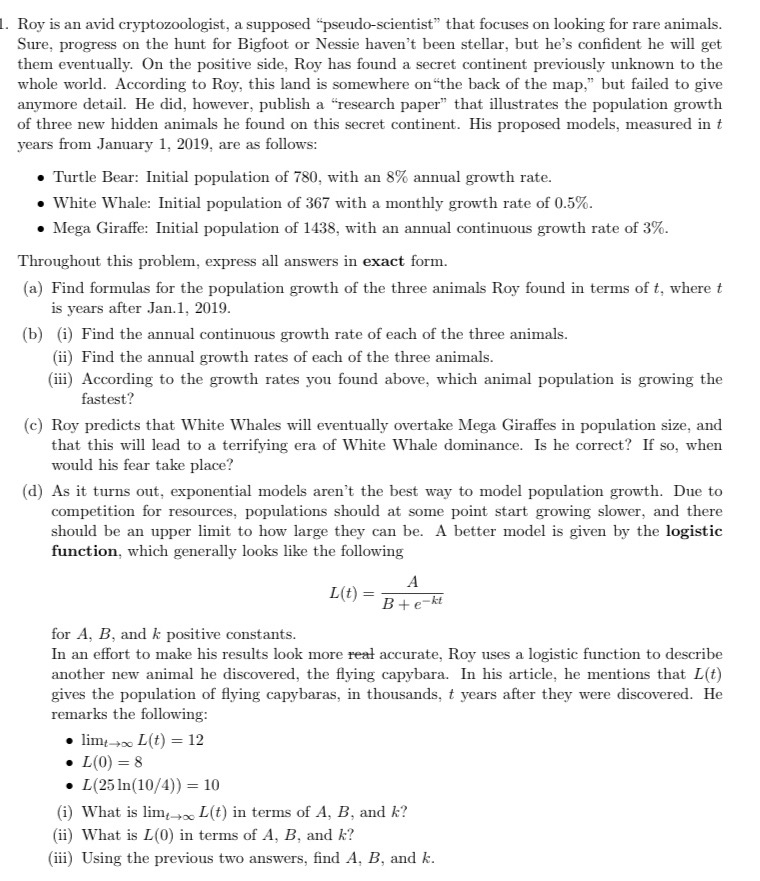Roy is an avid cryptozoologist, a supposed "pseudo-scientist" that focuses on looking for rare animals. Sure, progress on the hunt for Bigfoot or Nessie haven't been stellar, but he's confident he will get them eventually. On the positive side, Roy has found a secret continent previously unknown to the whole world. According to Roy, this land is somewhere on "the back of the map," but failed to give anymore detail. He did, however, publish a "research paper" that illustrates the population growth of three new hidden animals he found on this secret continent. His proposed models, measured in t years from January 1, 2019, are as follows: . Turtle Bear: Initial population of 780, with an 8% annual growth rate. . White Whale: Initial population of 367 with a monthly growth rate of 0.5%. . Mega Giraffe: Initial population of 1438, with an annual continuous growth rate of 3%. Throughout this problem, express all answers in exact form. (a) Find formulas for the population growth of the three animals Roy found in terms of t, where t is years after Jan.1, 2019. (b) (i) Find the annual continuous growth rate of each of the three animals. (ii) Find the annual growth rates of each of the three animals. (iii) According to the growth rates you found above, which animal population is growing the fastest? (c) Roy predicts that White Whales will eventually overtake Mega Giraffes in population size, and that this will lead to a terrifying era of White Whale dominance. Is he correct? If so, when would his fear take place? (d) As it turns out, exponential models aren't the best way to model population growth. Due to competition for resources, populations should at some point start growing slower, and there should be an upper limit to how large they can be. A better model is given by the logistic function, which generally looks like the following A L(t ) = Btekt for A, B, and k positive constants. In an effort to make his results look more real accurate, Roy uses a logistic function to describe another new animal he discovered, the flying capybara. In his article, he mentions that L(t) gives the population of flying capybaras, in thousands, t years after they were discovered. He remarks the following: . limt-+x L(t) = 12 . L(0) = 8 . L(25 In(10/4)) = 10 (i) What is lime + L(t) in terms of A, B, and k? (ii) What is L(0) in terms of A, B, and k? (iii) Using the previous two answers, find A, B, and k







